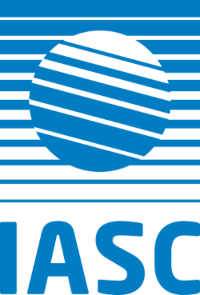 Coastal sea ice represents a microcosm of Arctic system change all in one small area. Sea ice, experiencing extended melt periods in the summer, is disappearing earlier in the season and returning later in the winter. This exposes coastlines to longer periods of larger waves, accelerating coastal erosion along already weakened permafrost bluffs. Changes in timing of sea ice and snow cover stress the marine and land animal populations, and all of these changes impact the communities that rely on subsistence hunting for their food security.
Coastal sea ice represents a microcosm of Arctic system change all in one small area. Sea ice, experiencing extended melt periods in the summer, is disappearing earlier in the season and returning later in the winter. This exposes coastlines to longer periods of larger waves, accelerating coastal erosion along already weakened permafrost bluffs. Changes in timing of sea ice and snow cover stress the marine and land animal populations, and all of these changes impact the communities that rely on subsistence hunting for their food security.
Observing coastal sea ice processes is a challenge however – brutal ice dynamics tend to destroy instruments during the critical period before land fast ice stabilizes. During the season when ice grows, darkness precludes visible imagery, and clouds limit the utility of those sensors the rest of the year. Passive microwave instruments, commonly used to observe sea ice extent through the rest of the polar regions because they can see through clouds and darkness, have large pixel areas that are contaminated by the presence of land.
My research works to fill sea ice observational gaps and squeeze more information out of the passive microwave data. The (albeit limited) visible and radar images of near-shore sea ice can help with our interpretation of passive microwave data. In a few communities along the Chukchi coast, individuals have been logging sea ice conditions in the area. These records throughout the year help validate the remote sensing approaches that can then be applied outside of the populated areas.
My postdoctoral work (at Dartmouth College, USA) involved developing buoys designed to withstand the forces of freeze-up; two were frozen in near Utqiaġvik, Alaska and measured the temperature and conductivity of the ice as it grew around the buoy. Ice growth rates could then be compared to the atmospheric (measured on the buoy and by the nearby weather station) and oceanic forcing. This project, especially when combined with the spatial information from my current research, highlights the heat exchanges between the coupled ice-ocean-atmosphere-land system.
I moved from Dartmouth to Williams College in July 2018 to begin a faculty position at an undergraduate-only institution where many students are actively engaged in research.
The IASC Fellowship program has been an opportunity to expand my network to more senior researchers than I have worked with in my experience with APECS. Getting to know researchers in other fields means that I can give my students better advice related to their often quite diverse interests. It also helps me stay well-connected to the polar community when there is not a large group doing Arctic research at my institution.
Get in Contact!
E-mail: alice.c.bradley[at]williams.edu
Twitter: @coldandsalty
IASC Fellowship Program
The IASC Fellowship Program is meant to engage Early Career Scientists (ECS) in the work of the IASC Working Groups (WGs). IASC Fellows are doctoral or postdoctoral researchers who actively participate in selected activities of the IASC WGs. The total duration of the IASC Fellowship Program is 1+2 years. After the first year the Fellows have an opportunity to stay involved up to 2 more years. The further involvement is individually decided by the WG Steering Group and the Fellow.
The IASC fellowship Program opens for new candidates every year around late September and is due mid-November . The call and the selection is held in collaboration with APECS.
For more information click here or contact the IASC Fellowship Coordinator Maja Lisowska.
